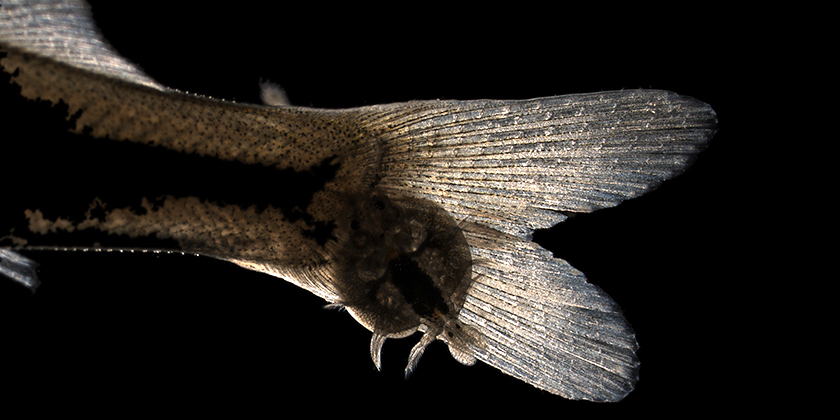Biodiversity

Understanding and preserving the dynamics of biodiversity
Human intervention is causing biodiversity in aquatic environments to decline even more severely than on land. We explore the diversity of nature to better understand how species emerge and how they become extinct. Based on this, we can determine which tools can be used to protect biodiversity.
Loss of aquatic biodiversity
Rivers, lakes and groundwater are closely linked to the way humans live. Our actions have a strong influence on these habitats. Consequently, while water bodies are among the richest ecosystems in the world in terms of species, they are also particularly endangered. According to the Red List of the International Union for Conservation of Nature (IUCN), updated in 2022, one third of freshwater animal species are threatened with extinction. This not only affects the adaptability of water ecosystems to climate change. We humans also lose an important source of food, clean drinking water and protection against floods.
Changes in land and water use reduce the natural habitat of water. For example, floodplains and marshes are drained, banks are blocked and rivers are used for energy production. Bodies of water are polluted by fertilisers, pesticides and other micropollutants. In addition, there are other factors, such as climate change and imported invasive species. All of this causes or accelerates the loss of species.

Eawag researches biodiversity
Freshwater ecosystems and their biodiversity are even less well studied than those on land or in the sea.
Eawag researchers:
- document what biodiversity can be found where and how it is developing,
- link knowledge about biodiversity in water and on land,
- investigate the connections between biodiversity and the services provided by ecosystems,
- explore which societal processes promote or endanger biodiversity,
- develop methods for monitoring biodiversity,
- provide data and tools for use to address the decline in biodiversity and its consequences,
- pass on current scientific findings in practical courses and practice-oriented projects,
- provide training for students and junior researchers on the topic of biodiversity.
Experts from engineering and the natural and social sciences work hand in hand at Eawag.
Publications for practice
Research projects
Network
We work together with a wide variety of partners.

The Federal Government is taking measures at various levels to preserve and promote biodiversity.

The event regularly brings together researchers from all disciplines with experts and social players.

Biodiversity Monitoring Switzerland surveys the development of species diversity of selected plant and animal species.
The scientific competence centre of the Academy of Natural Sciences is committed to the study of biodiversity.

The permanent exhibition “Cabinet of Curiosities” houses a unique fish collection and dates back to 1871.
Scientific publications
Cover picture: Eawag researchers Ewa Merz and Thea Kozakiewicz during field work on Lake Greifen (Zurich). The underwater camera Aquascope captures the tiny living organisms in Lake Greifen in real time (Photo: Eawag, Jonas Steiner).


















































